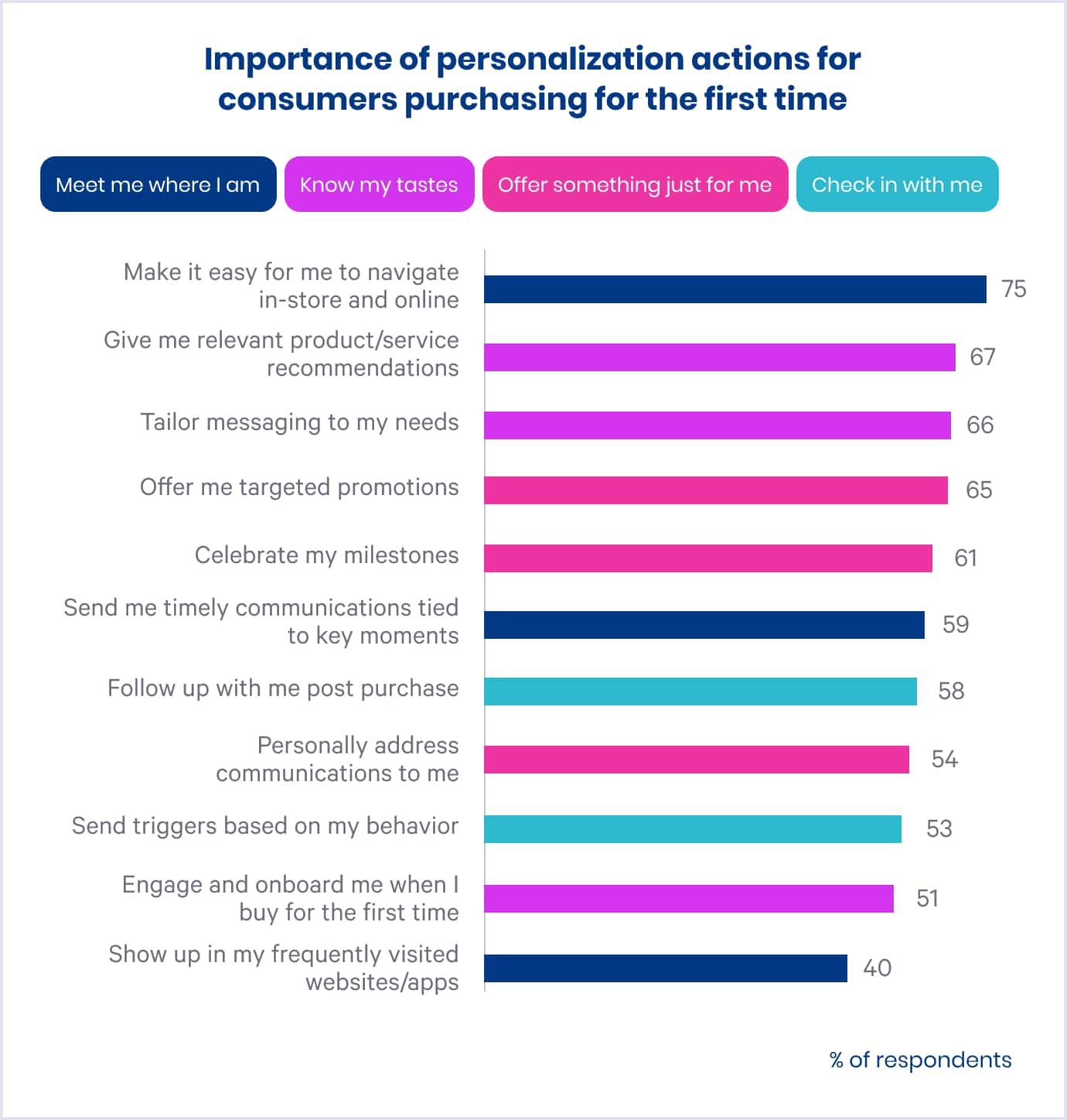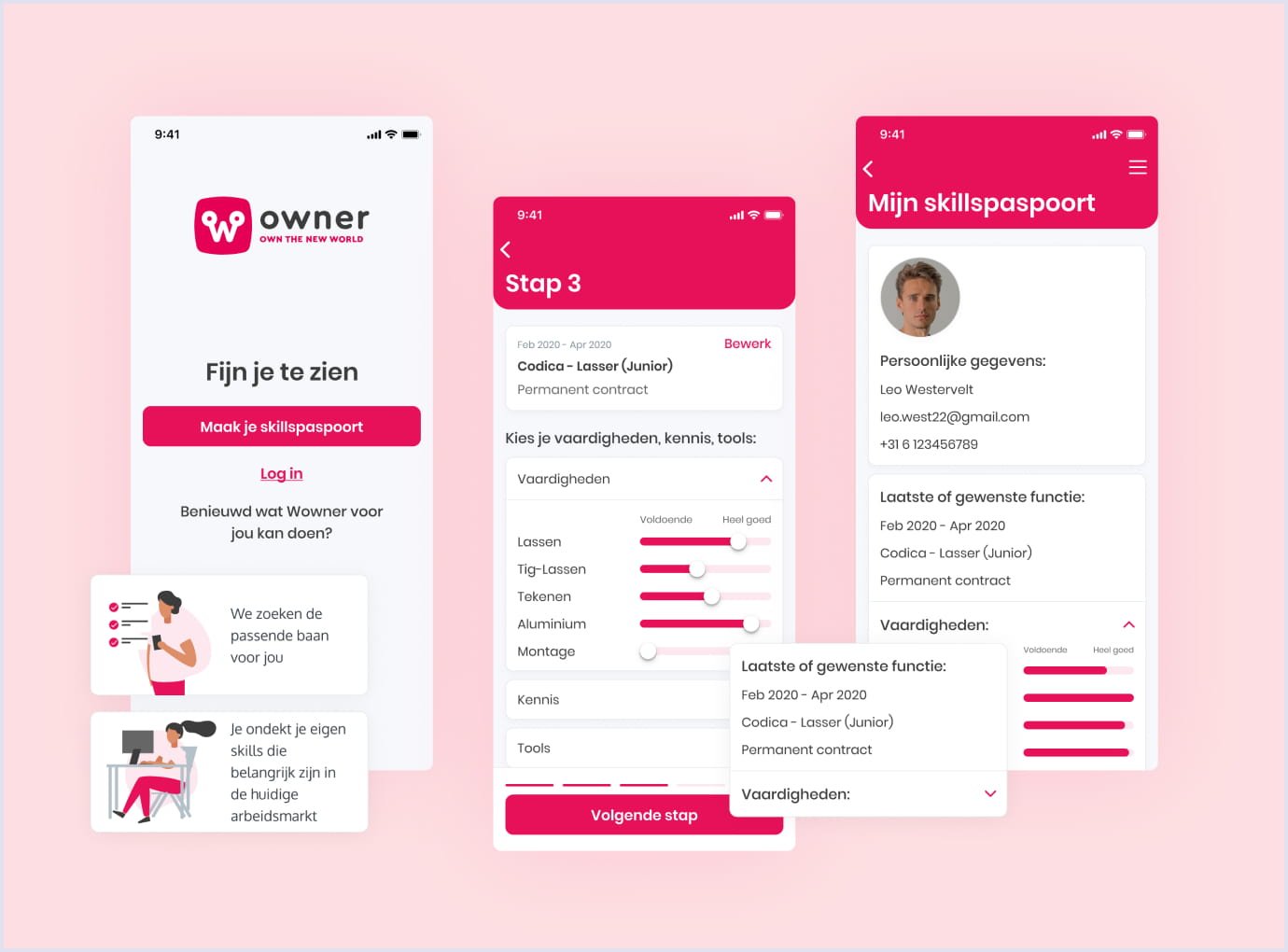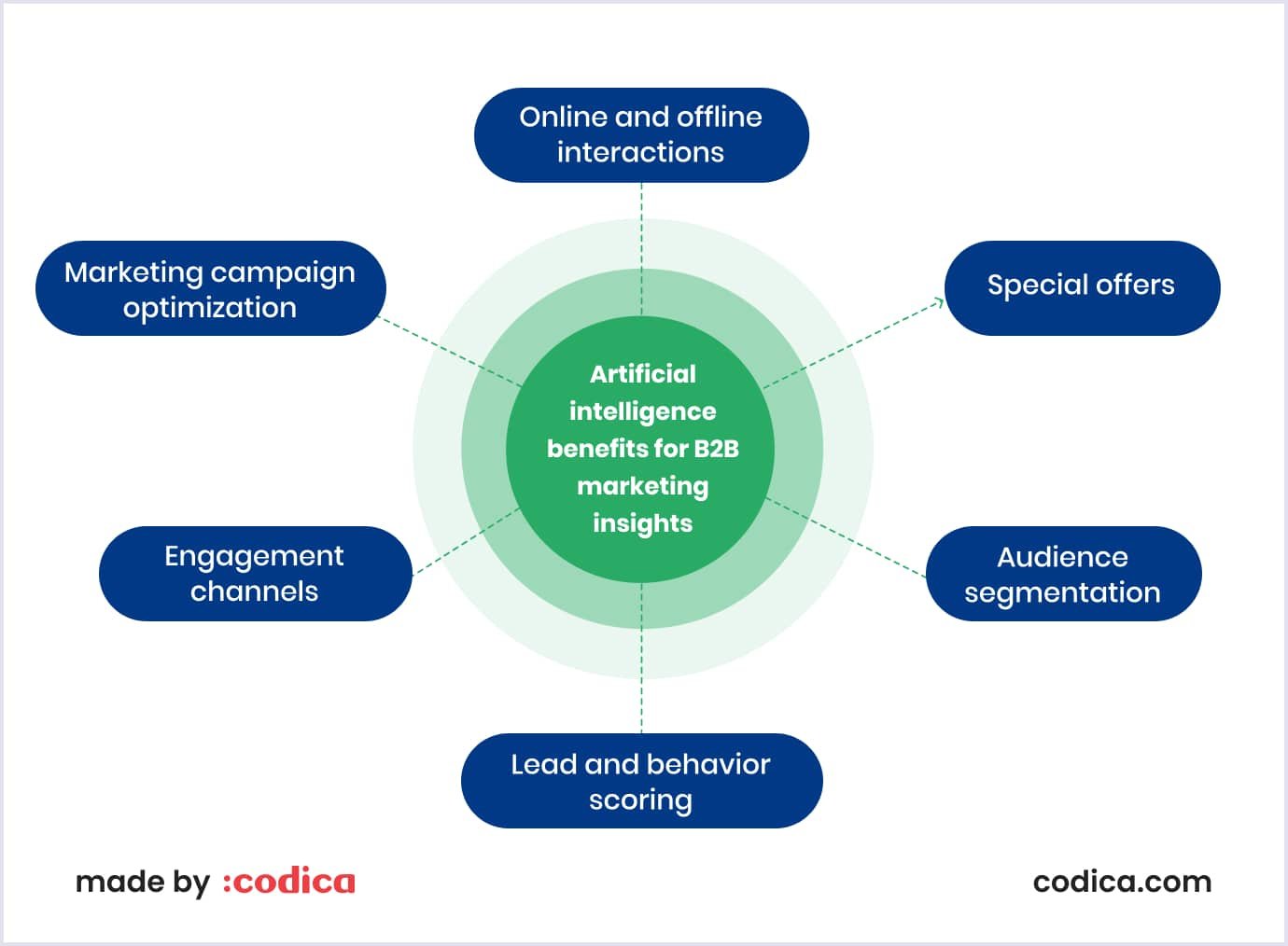Today, there are more than 3 million B2B businesses in the United States. They generate trillions of dollars in revenue. With a rich landscape of companies, building solid customer relationships in B2B ecommerce takes effort.
What are B2B companies? B2B or business-to-business entities provide services to other enterprises. B2B ecommerce companies ensure clients receive the necessary products and resources to operate.
This article discusses the B2B ecommerce trends of 2025 to help you stay informed on the crucial aspects of B2B online marketplaces. Read on to discover what enhancements you can include in your business work this year and beyond.
Social commerce
This approach means using social media to attract customer’s attention and boost sales. Companies create product pages, run ads, and include their products in carousels for posts on social media.
Purchases and sales are not limited to companies’ websites. Social media is the second preferred option for buying in B2B. According to the survey, 35% of B2B customers use social media channels for shopping. In comparison, 37% prefer dedicated websites.
As with other business sectors, B2B has growing opportunities from getting sales on social networks. B2B companies can use social commerce and bring an excellent user experience.
For example, IBM uses LinkedIn and Twitter, and HubSpot uses Facebook and Instagram. Salesforce uses social selling techniques to monitor companies for sales opportunities and attract leads.
Customer personalization
B2B businesses can personalize the customer experience at any buying cycle stage. According to a McKinsey & Company survey, 71% of buyers expect a personalized experience. The most crucial aspects of personalized experience are as follows:
- Easy navigation on a website;
- Relevant product/service recommendations;
- Tailored messages.
The image below shows how you can personalize the experience for users to get their loyalty.

Source: McKinsey & Company
How can you personalize your B2B sales? Here are several recommendations:
- Optimize your website with personalized calls to action. Also, add content serving specific groups by segment, persona, and behavior;
- Use personalized ads based on location, age, gender, occupation, and more. Also, implement personalized post-click landing pages;
- Create a unique experience for buyer personas. It should differ by business geography, industry, company size, buying capacity, role, and pain points;
- Make your emails to buyers tailored to their needs with relevant information;
- Address customers with reminders, confirmations, and event information;
- Target social media specific to your customers’ industry and interests where they spend the most time.
For example, Amazon Business provides tailored quotes for large-scale buyers, and Mailchimp enables B2B companies to segment and personalize email campaigns.
Read also: B2B Marketplace: Definition, Features, and Development Guide
Mobile optimization and PWAs
Though desktops are still used for online shopping, mobile devices have penetrated sales widely. That is why it is viable to build websites with a mobile-first design. By delivering a smooth mobile experience, you expand your audience and increase search engine ranking.
Along with mobile websites, B2B ecommerce companies use progressive web applications (PWAs). This technology has many benefits for businesses, including the following:
- Easy installation;
- Reduced development costs;
- Increased engagement rates thanks to push notifications;
- Offline work;
- Optimization for search engines;
- Enhanced security.
B2B companies use PWAs to deliver a better experience to customers. For example, Alibaba wanted to improve the mobile experience for its users. The problem was that customers would not use Alibaba’s native app. Instead, they would make purchases via browsers over desktops. It was far from the desired engagement with the platform.
So, the company chose PWA technology. Thanks to home screen installation and native experience, PWA gave the desired outcome. Alibaba received a 76% increase in conversions. Also, the company got 4x engagement rates from those who added the Alibaba shortcut via “Add to homescreen”.
Codica, among other tech services, is a PWA development company appreciating the technology. It helps us build robust and smooth apps, enabling our clients to bring their businesses to a new level.
For instance, a job matching system we developed is a PWA. Thanks to the technology used, our team delivered a smart solution with minimum development services costs. At the same time, the app ensures a rich experience as native applications.

The PWA we developed boasts an intelligent search system. It allows HR specialists to find professionals by skills and preferences. At the same time, candidates can create a profile indicating their experience, preferred hours, type of work, location, and more. Also, the app allows candidates to see if they can get a job based on their skill set. This information appears in a convenient dashboard.
Check out the video below to see how this smart PWA works.
Omnichannel sales
B2C companies have long been using this type of selling. A recent report from McKinsey & Company shows that B2B enterprises also began using the strategy in their practice. Earlier, B2B businesses were switching between sales channels before and after the pandemic. Today, with custom enterprise software development, they grasped the idea of splitting their sales between several channels.
So, B2B businesses offer their products and services in-person, by email, phone, supplier website, mobile app, web chat, and more. This interaction is one of the trends in B2B ecommerce. Buyers prefer omnichannel sales regardless of size, industry, customer relationship, and location.
For example, Toyota Material Handling manages its sales via its online platform and through the sales team.
When starting with omnichannel outreach, first examine your target audience. Check where your customers search for your services the most. The critical thing is that a smooth customer experience is a priority. So it is better to start with two or three channels and refine their work before expanding.

Augmented reality for immersive product experiences
Being among the top B2B ecommerce trends, AR or augmented reality enhances the user experience when buying products. AR is an interaction where the natural environment gets enrichment with digital content. Text, audio, graphics, and more can be added to real objects or spaces. The augmented and virtual reality revenue is expected to evolve with a compound annual growth rate of 8.97% by 2029.
Augmented reality in retail and entertainment industries has been in use for a long time. The B2B ecommerce sector is also adopting it. You can view augmented reality objects and effects on your mobile devices. So AR can help enhance user experience when making purchases.
The key benefits of using AR in the B2B ecommerce sector are as follows:
- Ensuring solid and long-lasting relationships with customers through AR personalized experience;
- Digital training to use AR-powered devices before practical application, like in surgeries;
- Meeting virtually to test products in digital environments;
- Uncovering hidden processes with AR during exhibitions and tours to attract customers.
With AR technology as one of the trends in B2B ecommerce, companies can give a view of their products. AR elements highlight product functionality and look better than traditional images or videos. For example, Cisco presented a Product and Services catalog driven by AR. So users can view Cisco’s products in 3D with better interaction and discovering features.
Check out the video below to see the catalog demo in more detail.
Viewing products in 3D before buying them is a helpful feature. You can examine the object from various sides without the need to go to a store or warehouse. We implemented this feature in the real estate portal that connects owners, tenants, and agents.
With the power of 3D tours, the platform provides tours to highlight the intricate details of real estate property in a realistic way. So users can understand the property peculiarities without going onsite.
Besides this, the portal has other valuable features. We incorporated user account management, allowing you to select a property based on size, location, amenities, and more. Swift search helps users find the property depending on the type, number of rooms, location, and other parameters. A smooth messaging system lets owners, tenants, and agents discuss the details in chat.
So, the solution keeps the parties informed and saves them time and cost for an in-person view of the property. Check the video below for a detailed perspective of how this solution works.
Self-service customer portals
Improving user experience in B2B businesses goes on many levels. One of the approaches is providing self-service portals. What are they? Self-service portals create an environment where customers can interact with the company. The environment is closed, making it available only to the company’s consumers.
With self-service portals, B2B customers can search for products and services. Also, they can check orders and statuses 24/7, book maintenance appointments, and more. Earlier, customers used to solve such issues via the phone, which made the processes hard. Now, customers have access to vital interaction points with the company. So, B2B consumers get a quick response to their needs. It relieves companies from excessive communication.
For example, OroCommerce and BigCommerce facilitate B2B transactions thanks to self-service solutions.
Consider the following points when building a self-service portal:
- The self-service environment should contain the essential features your customer will require. So, start by researching your target audience’s needs. For this, you can use minimum viable product development services. Then you can include the more sophisticated features that will delight your consumers.
- B2B customers’ needs differ from B2C, where self-service portals are used most. For example, a B2C customer gets an invoice for each order. Meanwhile, a B2B one may prefer to get an invoice by the end of the month or at other intervals. Also, if your B2B customer needs repeated orders, you can automate the process with a relevant button. Moreover, you can include automated reminders and notifications.
- Start small by launching a minimum viable product with vital features. Thus, you can get feedback from customers. Reported delight and consumer concerns are valuable sources for enhancing your portal.
The video below exemplifies how well-thought-out and convenient a self-service portal can be. The CIMcloud solution helps customers with intuitive navigation and informative dashboards. Also, the system includes features for managing invoices, orders, shipments, and payments.
Artificial intelligence for automation and insights
This digital aspect has penetrated our lives and is one of the ecommerce B2B trends. While AI-driven technologies do not compete with human power, they still significantly impact our lives. AI helps with planning, learning, reasoning, and understanding language.
As for the B2B sector, AI is a mighty tool to drive marketing endeavors. Getting insights into customers’ offline and online interactions with a B2B company is possible thanks to AI analysis. Thus, B2B marketers can understand how to personalize their customers’ experiences. For example, AI enables you to get the following benefits:
- Data on online and offline interactions. AI can prepare data on customers’ experiences with your website. Also, you can use AI to measure the implicit meaning of consumers’ offline actions. Thus, you can fully view customers’ priorities while interacting with your business.
- Creating special offers your customers need. You can offer special subscriptions, discounts, demos, and free samples with AI computing.
- Audience segmentation. AI takes the hard part and generates customer segments and buyer personas based on selected criteria. Marketers can further explore and implement such data.
- Analysis of the likelihood that prospects will become customers. Predictive lead and behavior scoring helps marketers analyze leads’ behavior and rank them. Also, marketers can enhance customer journeys with dynamic content.
- Selecting the right channels to engage potential and existing customers. Machine learning evaluates your prospects’ and customers’ touchpoints. So you can reach them through the proper channels.
- Delivering relevant experience using many means. AI helps you reach customers via your website, email, social media, ads, and more. The number of channels is unlimited.
- Marketing campaign performance analysis and optimization. With AI data, you can see which channels and approaches work best and optimize them if necessary.
To facilitate things for you, we summarized the above AI advantages for B2B ecommerce marketing in the image below.

As an example, KPMG, a multinational professional services network, uses AI across its operations, including accounting and tax divisions, to enhance data management and derive strategic business insights.
Upgrading security and privacy systems
In the B2B sector, reputation is of utmost importance. If a company has data breaches or other cybersecurity vulnerabilities, it may cause reputation damage. So, security and privacy are formed based on the following standards and technologies:
- Guidelines on user data protection, such as the General Data Protection Regulation (GDPR). Complying with similar standards means strengthening the company’s reliability.
- Cloud security. Cloud tools are widely used today, and the B2B sector follows this trend. So, companies drive data governance and security programs to act against attacks in the cloud environment.
- Machine learning. It is one more tool that is used in cyberattacks. Companies use machine learning to protect themselves. Meanwhile, attackers apply the same tool to manipulate vulnerabilities. So, entities seek protection against such threats.
Although there is no 100% data protection guarantee, you can apply the best security standards to protect your customers’ data. They are as follows:
- Conduct security audits regularly, checking vulnerabilities and security gaps;
- Use multi-factor authentication (MFA);
- Encrypt data transmission between business partners with firewalls and virtual private networks (VPNs);
- Use the latest security means to protect your software;
- Develop a plan that shows steps in case of vulnerability detection;
- Educate employees on security best practices.
You may also like: Key Trends in Digital Marketplace Industry in 2025
Real-time inventory management
B2B companies providing supplies for their customers need to be dependable. Continuous inventory management means that customers get their supplies when they need them. Also, inventory lists on the product page must reflect the actual stock size. With effective inventory management, B2B companies can be sure that their clients of all sizes get the needed supplies in time.
The software for real-time inventory management has clear advantages. With such tools, B2B companies can maximize their results by automating processes and making them more accurate. So here is how real-time inventory management software facilitates your work:
- Order automation. You can collect information from many channels and monitor your inventory and orders from one platform. This way, you can create a new order, update an order, create invoices, and process payments.
- Manual work reduction. The inventory software enables you to split orders and handle different flows on the same orders. Also, you can rank and substitute orders and fulfill requirements from customers of different levels.
- Global inventory view. The real-time inventory tools enable you to identify what stock you have. So your customers have the right expectations. Also, you can see which stock you need to replenish to avoid lost sales.
Among the top B2B real-time inventory management tools are the following:
- NetSuite Inventory Management helps optimize inventory levels. Also, you can track inventory across different locations with an intelligent system.
- Agiliron lets you manage your warehouse stock via desktop and app versions. The features allow for stock registration, replenishment, tracking, and more.
- Adobe Commerce handles large catalogs, many international locations, and loads of warehouse data.
- BigCommerce handles omnichannel sales. Also, it edits stock levels in catalogs with import and export features.
The image below summarizes the top instruments helping keep up with B2B ecommerce platform trends.

Multitude of payment options
From presenting your product to shipping large orders, the B2B selling process has various stages. The most crucial is payment, as it means closing the deal. So, what are the payment channels used in the B2B sector? Let’s discuss each of them.
Paper checks
B2B businesses prefer payment channels, ensuring safety and trackability to avoid fraud. That is why B2B companies use checks in payments. Companies’ accounts payable and accounts receivable are designed for processing checks.
This payment type protects against fraud. Also, it allows companies to track their inventory and cash flow. Such an advantage is only sometimes possible with digital payments.
Wire transfers
They are quick, flexible, and straightforward. B2B companies use wire transfers for larger and international payments. Such payments are processed through bank and non-bank institutions, such as MoneyGram and Western Union.
The advantage of this channel is that transfers can be edited and canceled after processing. The self-service portal on MoneyGram allows you to do these operations. Vendors can use these payments for periodic transactions, bulk, and recurring payments.
Credit cards
It is a standard method for paying ecommerce and SaaS companies. Although this approach is common, it can bring certain limitations. As credit card payments take percentage fees, large sums accumulate significant fees. So, this payment type does not suit bulk transactions.
Digital payment solutions
The top payment solutions are PayPal, Cash App, and Google Pay. PayPal has been the tool for B2B online payments for over 20 years. It provides safe transactions with a peer-to-peer payment approach. As for Cash App and Google Pay, they prioritize easy functionality, privacy, and security.
Apple also introduced a digital payment tool Apple Pay Later. It allows you to split your transfer into four payments within 6 weeks without interest and fees. The instrument is new and is now available only in the United States. Still, it has strong growth potential.
Cryptocurrency
This type of payment has become popular for B2B cross-border payments. Such payments are expected to reach $56 trillion by 2030, a 43% growth from 2023. Using blockchain, B2B cross-border payments validate and record details of crypto transactions. Thanks to this, single organizations cannot manipulate the transaction data.
However, some drawbacks make B2B players cautious about this payment type. Among them are cryptocurrency markets’ volatility, unclear regulations, and complex transaction processing.
For the most current statistics and insights, consulting recent industry reports and market analyses is recommended, as the landscape of B2B cross-border cryptocurrency payments is continually evolving.
Automated Clearing House (ACH) payments
With this approach, funds arrive at your merchant account using a routing number. Generally, it is a secure way of sending money. Vendors use it to make free and safe payments. Moreover, you can track money transfers thanks to monthly payment listings.
The downside of this payment type is that it is available only in the United States. So, if you plan to expand globally, choose another payment type with the least fees. Moreover, ACH payments take time. It is inconvenient for businesses that need fast payment processing.
To summarize B2B payment methods, we prepared the image below for a quick review.

Sustainability
Eco-friendly business is not only good for the environment but also benefits commercially. As a report from NetO shows, customers are willing to pay for sustainability and prefer brands that support it. So, companies can increase their conversion rates with sustainability by up to 20%. That is why sustainability is one of the B2B ecommerce growth trends.
In this respect, Elevate Packaging is an excellent example. It has two decades of experience providing recyclable and eco-friendly packaging. Moreover, their products are approved by the United States Food and Drug Administration (FDA). The company collaborates with grocers and the food service industry. One of their clients, Don Maslow Coffee, uses the company’s compostable zippers and valves to sell coffee.

Wrapping up
B2B ecommerce trends respond to evolving technologies and customer needs. The trends are not necessary to observe, but they may give your company a direction to thrive. Today, B2B ecommerce companies adopt technologies to make their operations efficient and eco-friendly. Following the best practices, B2B companies provide their customers with top-notch service.
We hope that this article is helpful to you. The trends we mentioned prevail in the market and help B2B companies build strong customer relationships.
We keep a vigilant eye on B2B ecommerce trends and implement them in e-commerce marketplace development. If you have any questions about building an efficient, secure, and sustainable product, our team is eager to help. Contact us for more details and a free quote.
